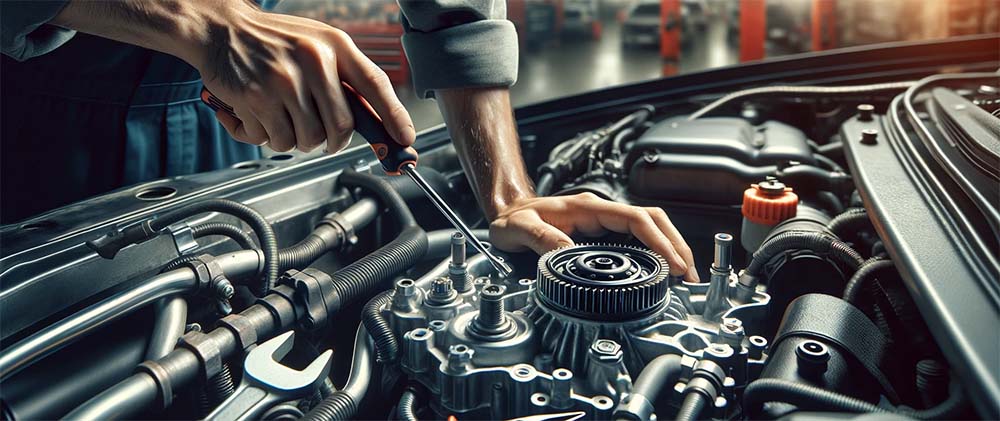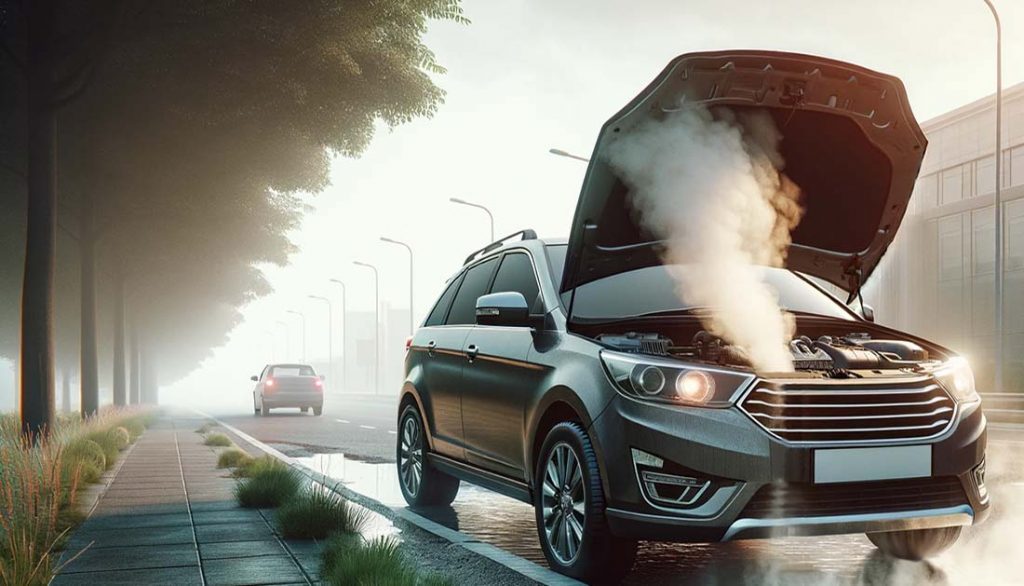The water pump serves as the heart of a vehicle’s cooling system, tirelessly working to circulate coolant through the engine and radiator to dissipate heat. This component is critical for preventing overheating and maintaining an optimal temperature range for the engine’s operation. Without a functioning water pump, the engine would quickly reach temperatures that could cause metal components to warp, seals to fail, and lubricants to degrade, leading to decreased performance, increased wear, and ultimately, engine failure. Understanding the vital role of the water pump underscores the need for prompt action when issues arise, highlighting the importance of recognizing symptoms of failure and knowing the appropriate steps to take.
Immediate Consequences of Water Pump Failure
When a water pump fails while driving, the immediate consequence is the engine’s inability to regulate its temperature, leading to overheating. This situation is dire because overheating stresses engine components beyond their thermal limits, potentially causing the head gasket to blow, which compromises the seal between the engine block and cylinder head. Additionally, the thermal expansion can lead to cracks in the cylinder head or even warp the engine block. These types of damage not only entail substantial repair costs but also significantly shorten the engine’s lifespan. In severe cases, overheating can cause total engine failure, necessitating a complete replacement—a situation every driver wants to avoid.
Symptoms of Water Pump Failure While Driving
Recognizing the symptoms of a failing water pump can help prevent significant damage. Key indicators include:
-
Overheating Engine: The most immediate sign, where the temperature gauge climbs higher than normal.
-
Coolant Leak: Puddles of coolant under the car when parked, indicating a leak from the water pump’s weep hole or gasket.
-
Strange Noises: Squealing or grinding sounds from the water pump area, signaling bearing failure or a worn impeller.
-
Steam from Radiator: Evident when the engine overheats, steam escaping from under the hood signifies a severe cooling system issue.
Noticing these symptoms early and responding appropriately can be crucial in avoiding more serious problems.

Steps to Take If Your Water Pump Fails
In the event of water pump failure, taking the right steps quickly can mitigate damage. Here’s what you should do:
-
Pull Over Safely: Stop driving and find a safe place to pull over as soon as you notice signs of overheating.
-
Turn Off the Engine: This halts further heating and prevents additional damage.
-
Allow the Engine to Cool: Never attempt to open the radiator cap immediately; wait for the engine to cool to avoid scalding steam.
-
Inspect for Visible Signs: Look for coolant leaks or damage once it’s safe, without attempting DIY repairs on the roadside.
-
Call for Assistance: Use roadside assistance or a tow service to get your vehicle to a professional mechanic for a comprehensive inspection and repair.
Taking these steps can help ensure your safety and potentially save your engine from extensive damage.
How to Prevent Water Pump Failures
Preventing water pump failures is largely about adopting a proactive approach to vehicle maintenance. The cooling system, with the water pump at its core, needs regular attention to function correctly. One crucial aspect of maintenance is ensuring the coolant is flushed and replaced according to the manufacturer’s schedule. Fresh coolant contains additives that protect against corrosion and buildup within the water pump, which can degrade its performance over time. Additionally, keeping an eye on the serpentine or timing belts that drive the water pump is important. These belts must be in good condition and properly tensioned, as a loose or worn belt can lead to inefficient pump operation or failure. Regular inspections for leaks, especially around the water pump’s weep hole, can catch issues before they result in failure.
Conclusion
Understanding what happens when a water pump goes out while driving is critical for any driver. This knowledge equips vehicle owners with the insight to recognize the early signs of water pump failure and understand the severe consequences that can arise from such an event. However, knowledge alone is not enough. Adopting a proactive stance towards vehicle maintenance, particularly concerning the water pump and cooling system, is essential in preventing such failures. Regular checks, timely coolant replacement, and attention to the condition of related components like belts can help ensure the longevity of the water pump and, by extension, the engine itself. In doing so, drivers not only safeguard their vehicles against significant damage but also promote a safer, more reliable driving experience.

